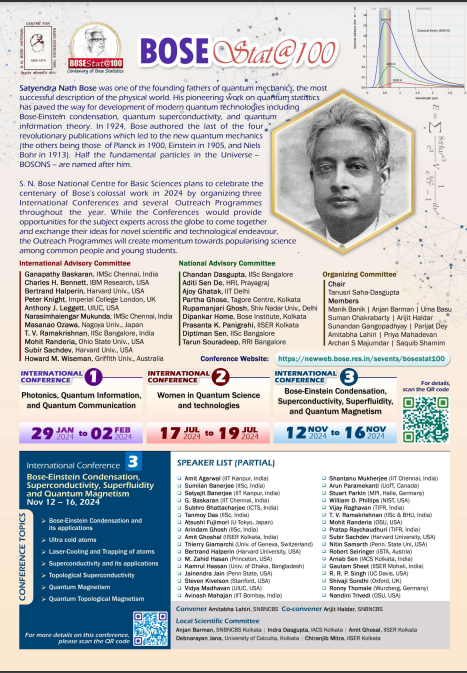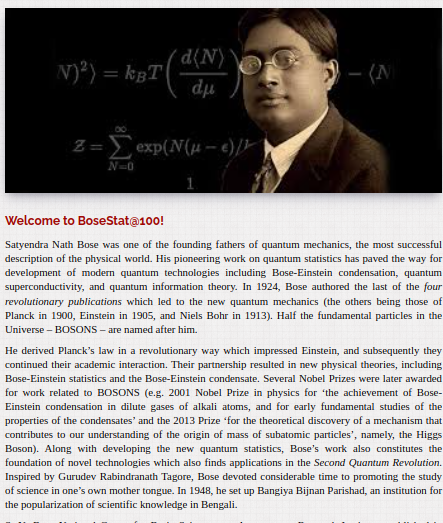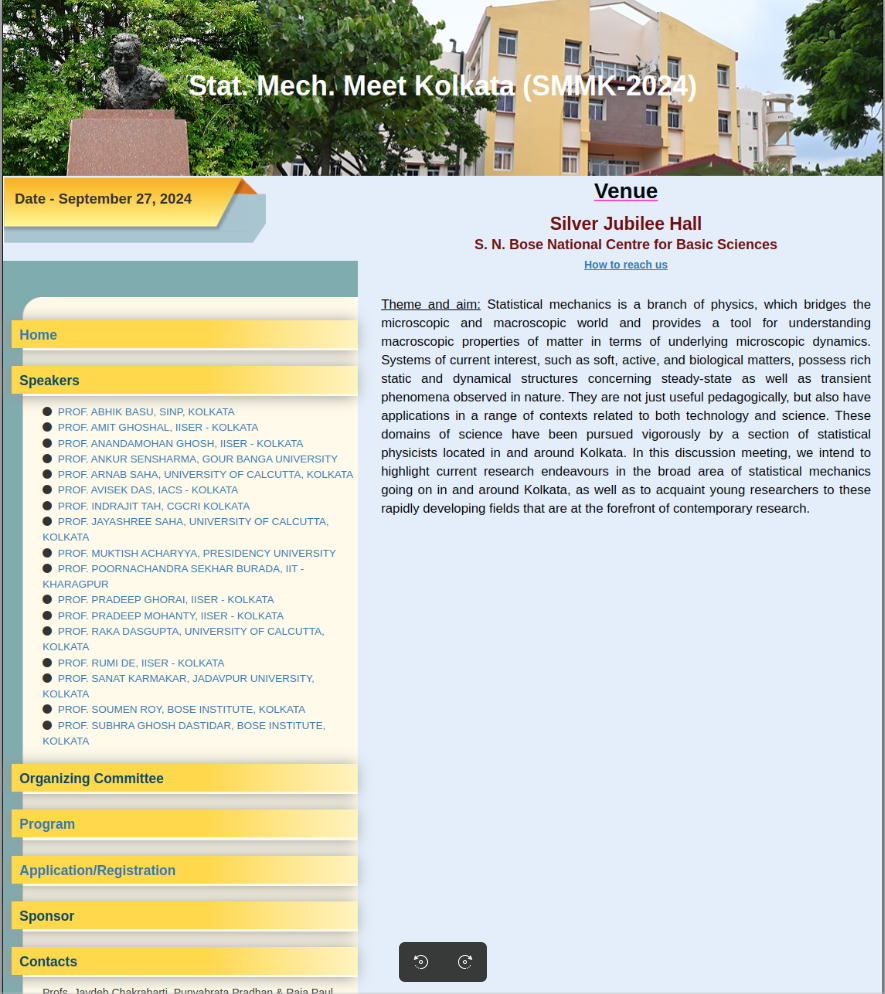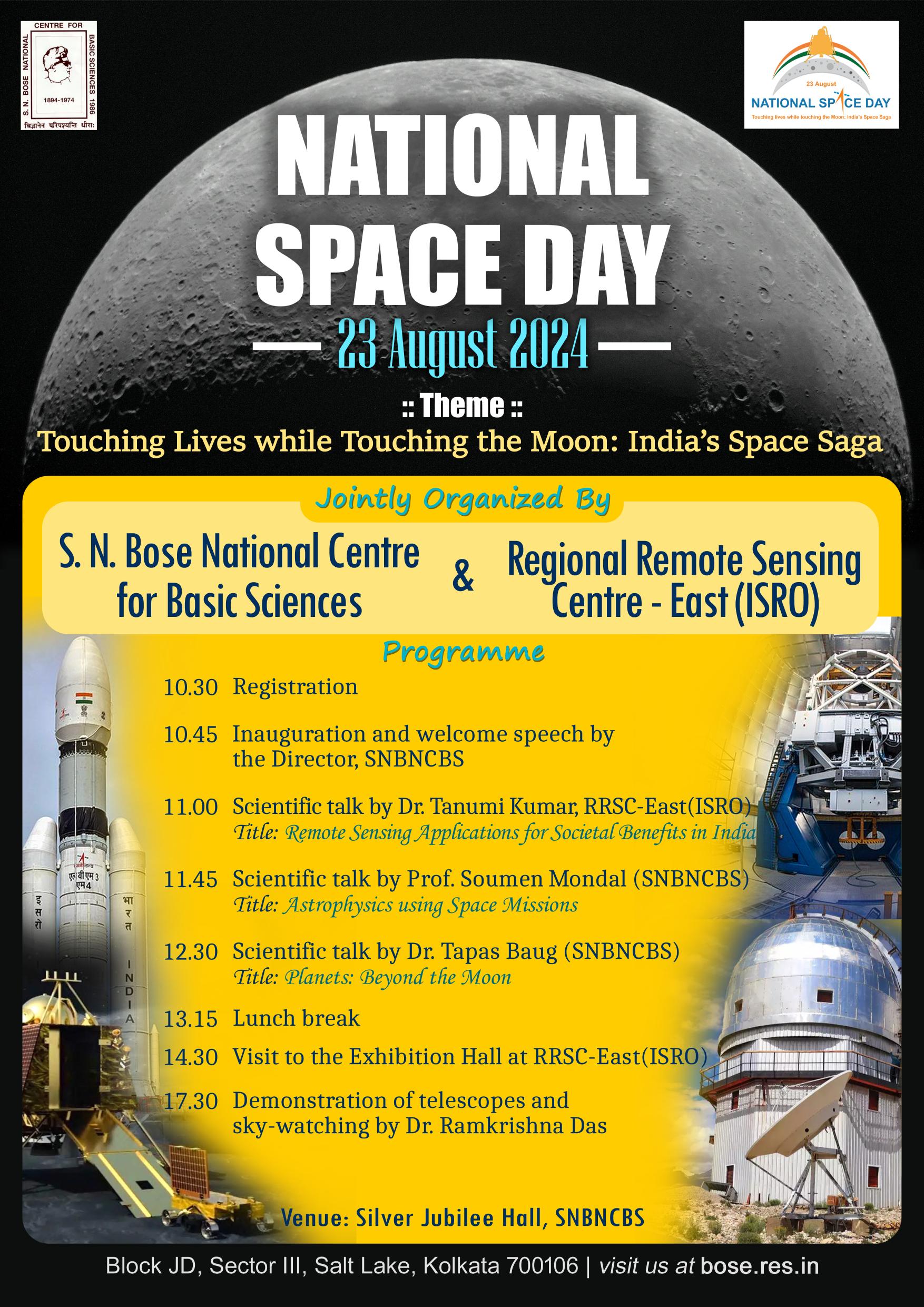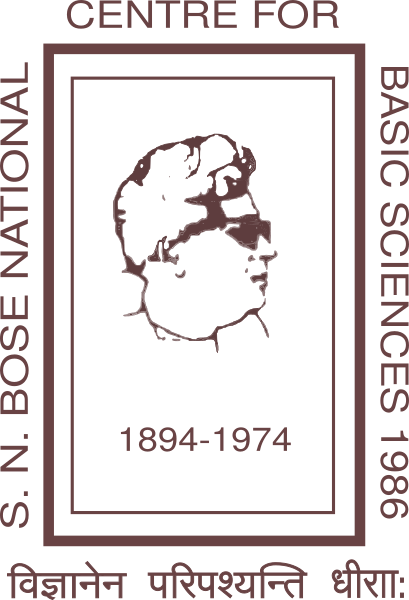
S. N. Bose National Centre for Basic Sciences
Under Department of Science and Technology, Govt. of India
Research
Collaborations
S. N. Bose National Centre for Basic Sciences
The S. N. Bose National Centre for Basic Sciences is an autonomous research institute engaged in research in basic sciences. The institute was founded under Department of Science and Technology, Government of India in 1986 as a Registered Society. The Centre was established to honour the life and work of Professor S. N. Bose who was a colossal in theoretical physics and has made some of the most fundamental conceptual contributions in the development of Quantum Mechanics and Quantum Statistics. The Centre has emerged as a major institution for research and development in Basic Sciences.
At a glance
Lectures, Seminars & Colloquia
Mechanical and Nuclear Engineering & Electrical and Computer Engineering / Physics, Virginia Commonwealth University
News & Achievements
- The paper "Investigation of circular geodesics in a rotating charged black hole in the presence of perfect fluid dark matter" by Prof. Sunandan Gangopadhyay has been awarded an IOP Publishing Top Cited Paper Award. This noteworthy achievement signifies that his research is featured in the top 1% of the most cited papers in his subject category. And it is also one of the most cited articles from India, published across the entire IOP Publishing journal portfolio within the past three years (2021 to 2023). Congratulations to Prof. Gangopadhyay.
- Dr. Shubhrasish Mukherjee, Scientist C under the Technical Research Centre (TRC), working in the group of Dr. Atindra Nath Pal, has secured 2nd position in the Young Physicist Colloquium -2024, organized by Indian Physical Society (IPC) held at SINP, Kolkata during 22-23rd August 2024.
- Professor Manik Pradhan and his group have recently made pioneering contributions to exploring polarization-controlled optical beam shift phenomena using quantum weak measurement technique. This work has been selected for inclusion in “Spotlight on Optics”.
Here is the Spotlight Summary and link to the research article:
https://opg.optica.org/spotlight/summary.cfm?id=547267
https://doi.org/10.1364/JOSAB.515145
The group experimentally and theoretically demonstrated the tunable beam shift by varying the polarization angle of the incident light and, showing that enhanced shift is possible for a certain range of polarization angles. This study reveals the promising applications of beam shift in polarization-controlled optical devices such as beam steering, switches, beam splitters, and sensors.Heartiest congratulations to Prof. Pradhan and his team for being featured in the “Spotlight!”.
- Mr. Ritwick Sarkar, a Senior research fellow, from the group of Dr. Urna Basu has received the best presenter award at the "Condensed Matter, Materials Science and Statistical Physics Conference 2024" (CMMSSP-2024) organized by the Department of Physics, Presidency University on 9th and 10th August 2024, Kolkata. Congratulations to Mr. Sarkar.
- We are thrilled to announce that Prof. Tanusri Saha-Dasgupta, Director of the S. N. Bose National Centre for Basic Science, has been ranked among the top 0.5% of scholars worldwide in the list made by ScholarGPS, which recognizes the Top Scholars for their exceptional contributions across various fields, disciplines, and specialties. This remarkable achievement reflects her outstanding publication record, impactful research, and significant contributions to the academic community. Hearty congratulations to Prof. Saha-Dasgupta!!
- Dr. Suman Chakrabarty, Associate Professor of the Centre has been awarded the prestigious CRSI Bronze Medal ! His groundbreaking research and dedication continue to inspire. Congratulations, Dr. Chakrabarty!
- S. N. Bose National Centre for Basic Sciences is awarded "Ananda Shiksha Shrestha Samman 2024" by ABP Ananda for recognition of Centre's activity.
Announcements
Upcoming Conference
Enrollment
COVID Awareness
Tenders
- [Oct-29-2024]Day to Day Maintenance of Landscaping & Horticulture Work at SNBNCBS
- [Oct-30-2024]Relocation of 320 KVA DG set including erection, testing-commissioning with ancillary Mechanical-Electrical works at SNBNCBS, Salt Lake, Kolkata-106 - RETENDER
- [Nov-01-2024]Repairing and modification of Lab No-102,103A,105A,123 (Noise Lab), flooring of Reception area and some safety arrangement for maintenance at different heights at Main Building
- [Nov-04-2024]Cryo-free magneto-optical cryostat
- [Nov-05-2024]FIB-SEM System
Jobs
Read Our Recent Publications
- Solvation Plays a Key Role in Antioxidant-Mediated Attenuation of Elevated Creatinine Level: An In Vitro Spectroscopic Investigation J. Phys. Chem. B 2023, 127, 40, 8576–8585
- A new alloy developed can act as alternative magnetic refrigerant for minimizing greenhouse gas emissions Phys. Rev. Materials 7, 084406
- Dithiophenedione-Based Covalent Organic Frameworks for Supercapacitive Energy Storage ACS Appl. Energy Mater. 2023, 6, 18, 9256–9263
- A Thiazole-linked Covalent Organic Framework for Lithium-Sulphur Batteries
Research Highlights by DST Media Cell

Researchers have explored the mechanism behind the emerging property of recently discovered exotic disordered state of matter, known as “hyperuniformity”. Hyperuniformity is a property of certain heterogeneous media in which density fluctuations in the long-wavelength range decay to zero. Hyperuniform disordered materials have been observed in a variety of settings, such as in quasicrystals, large-scale structures of universe, soft and biological emulsions and colloids, etc.
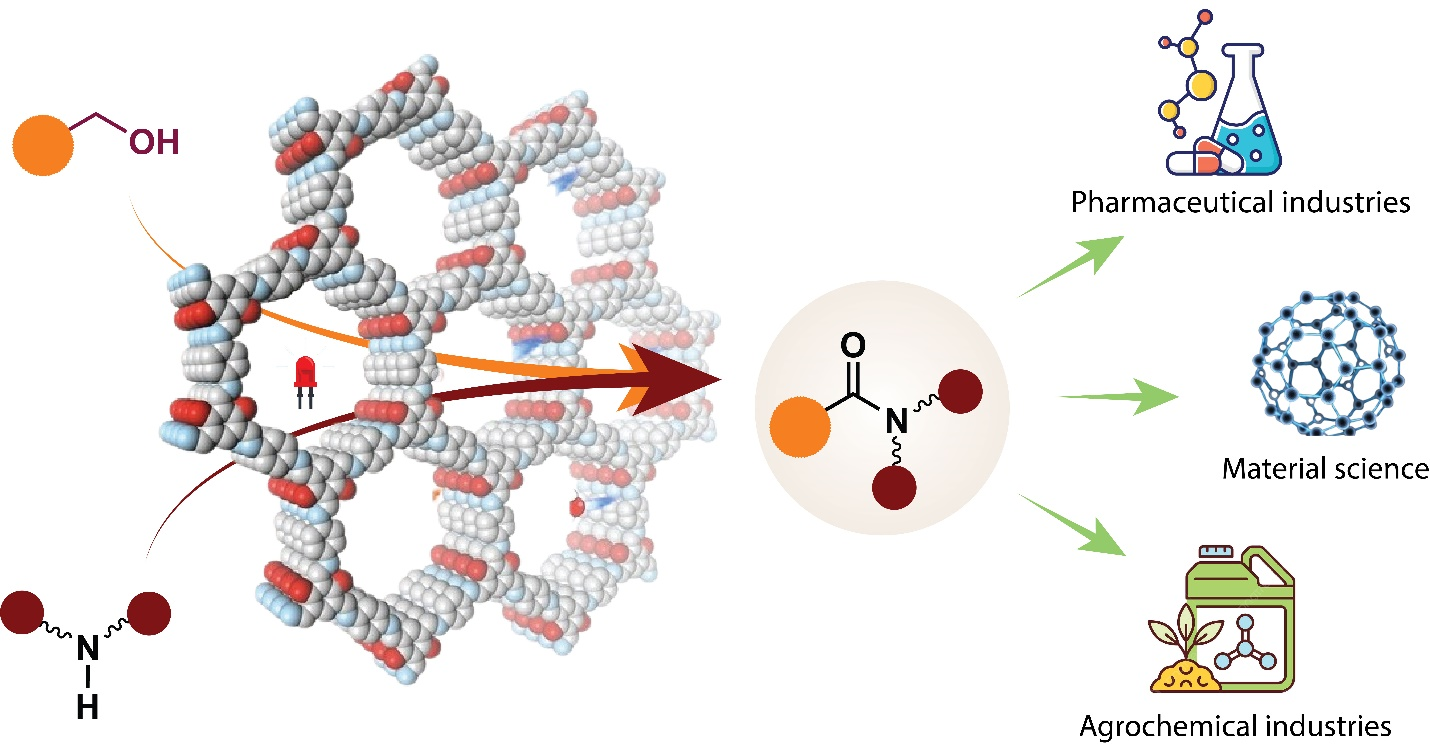
Researchers from S. N. Bose National Centre for Basic Sciences, an autonomous Institute of the Department of Science and Technology (DST), have introduced a novel method for synthesizing amides from alcohols using a Covalent Organic Framework (COF) as a photocatalyst under red light irradiation. This catalytic method can be helpful in chemical processes across various industries, including pharmaceutical manufacturing, materials science, and green chemistry - offering a more sustainable, efficient, and recyclable approach to creating vital chemical structures.
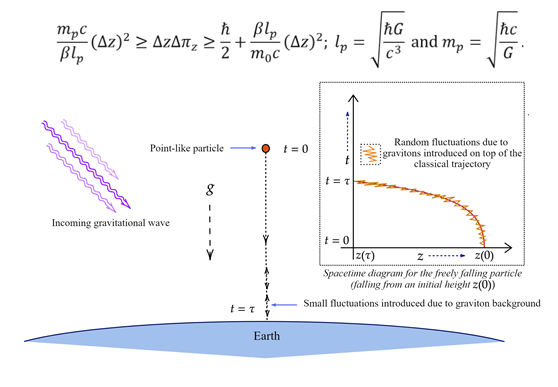
In a step forward to unify the classical theory of gravitation and quantum mechanics researchers, through their calculations have obtained an uncertainty relation induced from the noise of gravitons—the hypothetical quantum of gravity, an elementary particle that mediates the force of gravitational interaction.
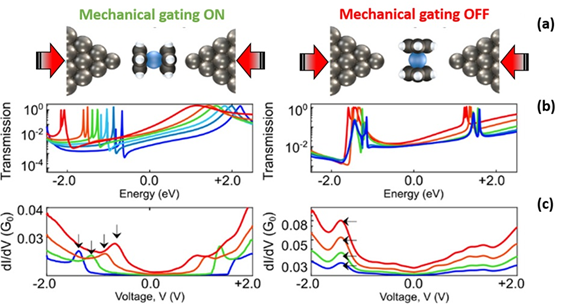
A unique transistor developed using single molecules, controlled by mechanical forces could pave the way for advancements in areas like quantum information processing, ultra-compact electronics and sensing applications.
